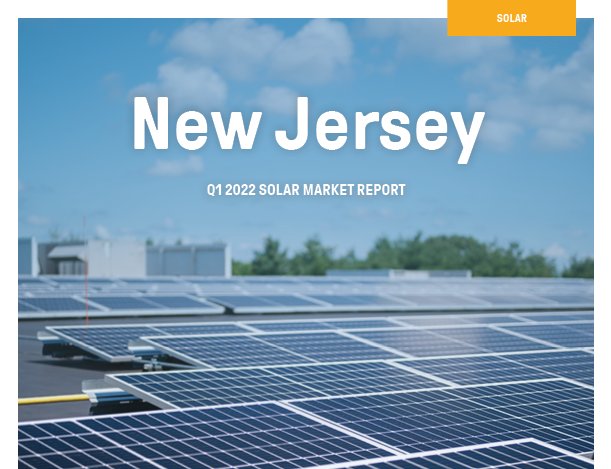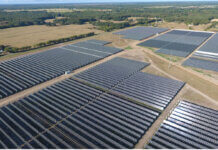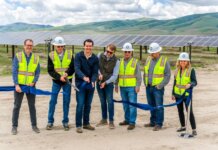DG+Design’s latest New Jersey Solar Market Report shows that the state installed a record 3.8 GW of new capacity during 2021. Despite overcoming challenges from the COVID-19 pandemic, including supply chain issues, New Jersey now faces a significant grid interconnection backlog and incentive uncertainty. The state saw a massive spike of new solar projects in Q3 2021, followed by a drop-off of installed capacity during Q4.
At a January meeting of the New Jersey Board of Public Utilities, members discussed reducing state incentives for solar development, despite the rocky road ahead as the state works to hit 37% solar power by 2050. New Jersey’s strong incentives have made it a leader in solar development over the last 10 years, with a good track record of rooftop community solar development.
While decisions about state incentives will be determined within state borders, the looming danger of grid interconnection delays threatens projects in New Jersey and beyond. PJM Interconnection (PJM), a large power grid stretching along the Eastern United States, is facing an interconnection backlog of over 1,200 projects, many in New Jersey. In light of the massive backlog, PJM is seeking a two-year pause on reviewing projects in the queue, with new projects likely to face even longer wait times. Such delays stand to substantially threaten the development of solar in New Jersey.
However, there are hopeful signs, particularly for the state’s commercial solar sector. In July of this year, a New Jersey law will go into effect requiring newly constructed warehouses over 100,000 square feet to be “solar-ready,” with measures like reserving roof space for solar panels and utilizing solar water heating systems.
Additionally, due to the success of New Jersey’s community solar pilot program first launched in 2019, Gov. Phil Murphy has instructed the NJBPU to make the program permanent. The release of a stakeholder input process is expected in February of 2022.
“Interconnection queue delays produce extended project timelines and greater financial risks, which in turn can cause a further hesitation to invest in new solar projects,” says Kathleen Gill, director of clean energy at DG+Design. “Given the extended backlog of PJM’s queue, it is unclear if New Jersey will be able to maintain its high rate of solar development in 2022, which could impact its ability to reach its long-term renewable energy targets.”
In Q4 2021, commercial sector installation capacity dwarfed residential installation capacity by a 3:1 ratio, with solar development especially concentrated in PSEG territory. For the calendar year 2021, New Jersey’s largest residential solar developers were Vivint Solar (acquired by Sunrun), Trinity Solar and Vision Solar. In the commercial sector, EnterSolar led the pack, followed by Distributed Solar Operations and Smart Citizens LLC. Community solar development was led by Solar Landscape, Altus Power and CEP Renewables.
“Consistent incentive offerings have been key to ongoing growth of solar in New Jersey, allowing it to outpace many surrounding states,” comments David Ganske, CEO of DG+Design. “As state incentives decline in the coming years, it will serve as a test of New Jersey’s solar sector, and perhaps as a harbinger of what’s to come as other states consider cutting incentives.”
Read the full report here.





According to the New Jersey state government website, https://www.njcleanenergy.com/renewable-energy/project-activity-reports/project-activity-reports, the state has a total of 3.7 gigawatts of solar installed as of 12/31/2021. This article lists last years’s new installations as 3.8 gigawatts. That is erroneous. New Jersey is doing quite well with solar though just not doubling it every year.